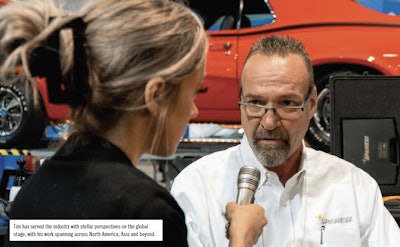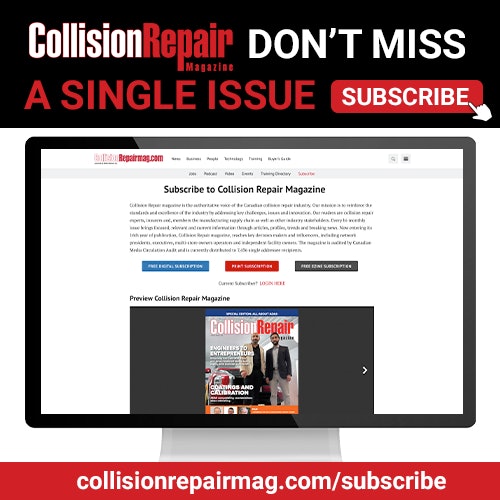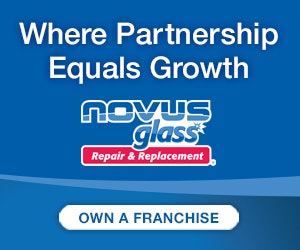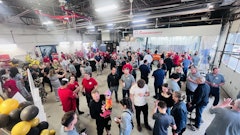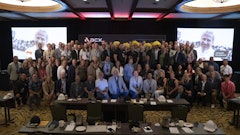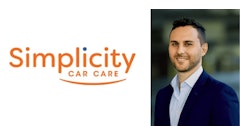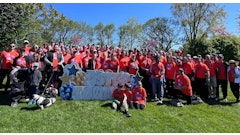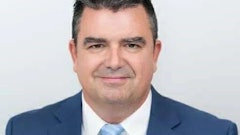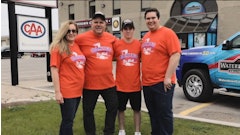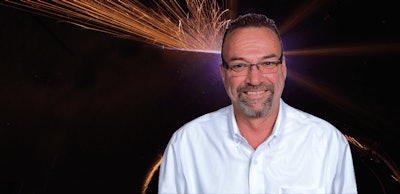
Industry veteran Tim Morgan has been immersed in the industry for nearly five decades. “I started in this industry when I was 15. I’m 62 now, so you do the math,” he joked to Collision Repair.
A pillar of the collision repair industry
Story by ALLISON ROGERS
Tim Morgan’s mind is a library of collision repair wisdom. After nearly 50 years in the autobody industry, Tim has held almost every auto repair tool you can think of—and helped develop a lot of them, actually.
Not to mention the roles he’s served in, from welding on production floors to teaching protégés proper techniques across the globe. This past April, Tim departed his most recent role and is reflecting on his career thus far. We spoke to the subject expert earlier this spring to see what he anticipates is around the corner.
Catch a glimpse of our conversation with this visionary mind below—and be sure to take notes.
AN ENTREPRENEURIAL MIND
Tim’s never been one to sit still. As of late, he’s been busying himself with plasma cutting, and had just finished a cut upon answering the phone. “It’s a big plasma table.”
His entrepreneurial spirit is a big part of what drove Tim’s career. At the end of high school, when asked by a guidance counsellor what was next, Tim told them he was keen to pursue autobody. They shook their head and said, “No. You’re too smart.”
“I had to get my parents in there to convince them otherwise,” he added. Tim first worked for a neighbour but, by the time he was 19 years old, he was managing a bodyshop for a Ford dealer. By the time he turned 21, he owned his own facility.
“I was a go-getter. From the time I was 14 years old until I graduated high school, I always had a job sitting in my parents’ garage, something I was tinkering with. It eventually got to the point where I had enough experience and initiative to start my own business.”
From owning his own facility, Tim went into education to spread his passion for the industry. He was the director of Ohio Technical College in Cleveland, Ohio, which offered a sprawling 50,000 sq. ft. collision centre to its students. The year Tim took over, there were 10 students enrolled. When he left three years later, there was a class of 52.
“When you looked at the students that were leaving that program, you could see they were truly happy with their education. When I arrived, there wasn’t a lot of handson work happening, but lots of theory. I said, ‘No, we need real cars. We need to be showing students how to fix real damage.'”
Tim had a hand in opening the first-ever I-CAR welding site east of the Mississippi during his tenure with the business. His talents caught the eye of Ron Kuhn, director of I-CAR business development at the time, who connected him with Larry Carter at Car-O-Liner.
Tim was with Car-O-Liner for 14 years, extending his talents to various roles. When he departed the company, he was the global training technical manager.
“I got to spend a lot of time in foreign countries, especially in Asia. I worked to change the training and education processes in India, Indonesia, Thailand, China and Malaysia.” “I recall once, in China, training a gentleman who took care of his entire extended family at home. He was welding without a helmet. I asked him how he planned to take care of his family when he’s blind—I didn’t know if I got through to him. But when I returned six months later, he made sure to get that helmet.”
In the early 2010s, Spanesi approached Tim to assist in developing its American business. Spanesi Americas launched in 2013. By January 2024, the company had exceeded more than US$60 million in sales.
“We grew a distribution network; a training network. Worked with OEMs to get equipment certifications…we did a lot of great things for our industry.”
THE FUTURE OF BUSINESS
Tim’s experience has some of the widest breadth you’ll find in the industry. He holds wisdom that stretches from the production floor to closed-door meetings with OEMs and everything in between.
Of course we had to ask how he feels about the future.
“One of the biggest things I see right now is the financial struggle of the collision centre. I always stress that I never understand why repairers are not charging what they are worth. I think there needs to be a swing in how claims are processed,” said Tim, adding that he feels the current process to be “one-sided.”
“There are people investing a lot into equipment. They need to have some return on that investment. Let’s remember that equipment is there, in the first place, because of an OEM policy or something to ensure the vehicle is repaired properly and, ultimately, the safety of the customer.”
Tim also believes MSO growth will continue, but there could be “educational problems” on the horizon.
“Take, for instance, an owner that has 10 shops. They’ve got 60 or 70 employees, at least, and they all need to have some sort of training. Add in the fact that everything changes so quickly—how do you keep up?”
ON THE CUTTING EDGE
With his incredible experience in welding, it’s no wonder Tim is a whiz on the plasma cutter. He recently bought a CNC plasma cutting machine and has put product out to customers, including his local police departments, with orders coming in
“I thought I would do this for a fun hobby on the side, but you could turn it into a full-time gig.”
And, true to the Tim the industry knows, he’s keeping an eye on things. “I’m always looking for the next opportunity. I don’t know exactly what that opportunity is yet, but let’s just say I’m listening to people.”
